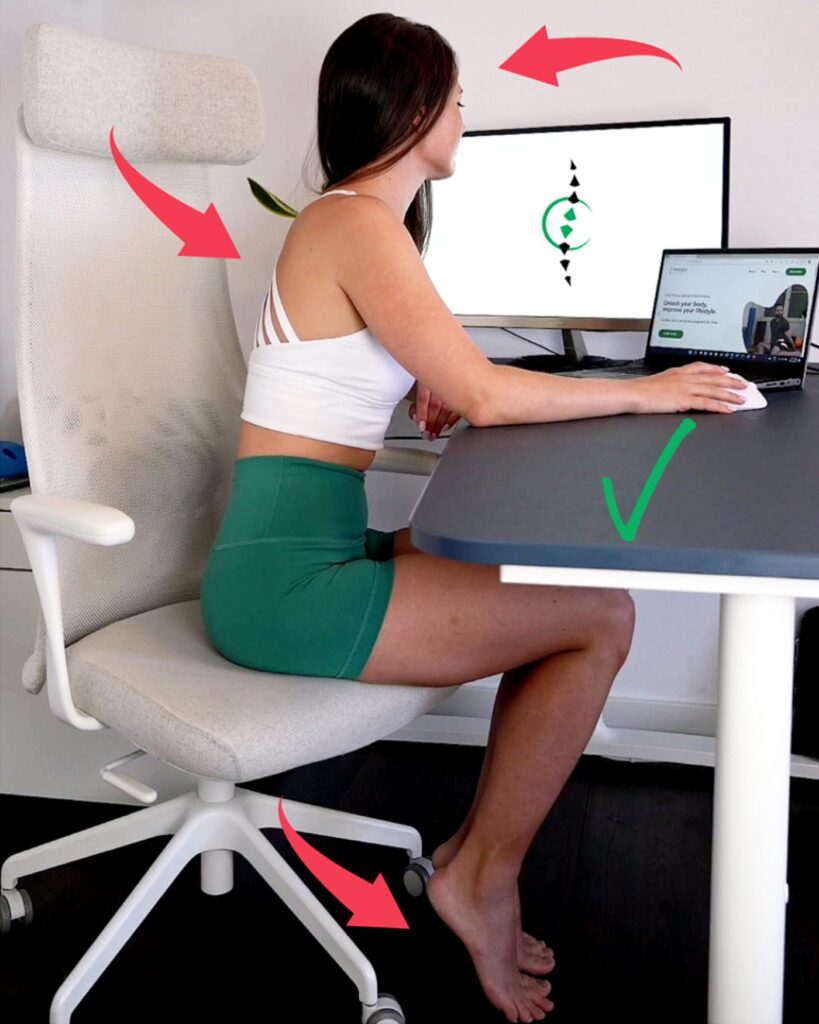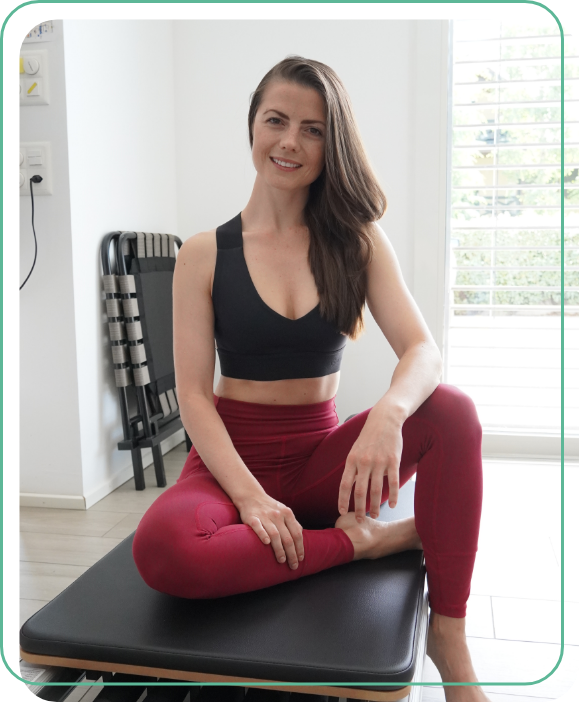This is what you have probably heard: “Sitting is bad for your posture”, “Sitting is the new smoking”. A little bit dramatic, isn’t it? Following the simplifications, one could argue that standing is also bad for you since, in evolutionary terms, our spine is not (yet?) designed to support our weight.
What is bad for you is often not a specific position or posture, it is the fact of adopting and maintaining that posture, without thinking about it, during extended periods of time.
We all have our characteristic “allure”, the postural habits that practically define us, the standing mainly on one leg with the hip pulling out, the sitting cross-legged in that very distinctive way, etc.
The idea is not to repress those habits but to control them. If you are mindful of how you are sitting and change position often, if you remember to slightly engage your core while walking, for support, you will notice the benefits at the end of the day.

The best posture corrector is you
Props and gadgets may seem tempting but ultimately the goal is to achieve body awareness and muscle balance that leads you to living your optimal life. If we rely on props and gadgets that hold us in place, then we don’t actually educate the body which means the muscles are not developing and ultimately our body is not free. If you want a functional body and freedom in your movement then you should aim for control over your joints and muscles. Let’s start with how you can do that on a daily basis while working…
You can easily find some great infographics about the exact optimal alignment of your chair, keyboard, table and screen. Here are some tips however that will help irrespective of your workspace since, with more and more remote work, it may vary.
Tips for seated posture
- Feet flat on the floor.
- Sit on sit bones, avoid the weight rocking onto the tailbone or the pubic bone.
- Wide collar bone.
- Head gently pulled back and stacked directly over shoulders.
- Crown of the head pulling up.
- Forearms comfortably resting on the table with the wrists being an elongation of the forearms.
Why neutral pelvis and spine: because this is the natural alignment of a healthy spine.
Are there variations to this alignment? Yes, of course. The goals is not to force yourself into this position but to find as close to this as possible while remaining pain free.
Tips for standing posture
- Find weight though 4 corners of each foot.
- Hips stacked directly over ankles.
- Shoulders stacked directly over hips.
- Head gently pulled back and stacked directly over shoulders.
- Crown of the head pulling up.
- Forearms comfortably resting on the table with the wrists being an elongation of the forearms and over flexed or extended.
It’s ok if you come out of neutral, this happens, we just want to come back to neutral as much as we can in order not to put too much strain on muscles and joints.
Maintaining neutral alignment (optimal posture) does not guarantee that you won’t have pain, but it will reduce/minimize it. In addition to holding a better posture, you want to include short movement breaks throughout the day! Let’s go through some movement breaks you can start doing right away! Remember to take deep breaths as you do these.
Tips for movement breaks
Neck and shoulders:
- Interlace your fingers and place them behind your head. Begin to push the head back while resisting with your hands.
- Lift arms out to the sides, shoulder height and bend the elbows 90 degrees. Begin to rotate the shoulders internally and externally.
Back:
- Stand with hands on the table. Begin to round and arch your spine, focusing on moving one vertebra at a time.
- Stand with arms crossed over the chest. Hips stay facing forward as the spine rotates side to side.
Hips:
- Stand on one leg, bend the other knee and pull the foot to the back of the hip. Hold, up to 2 minutes per side.
- Same position as above. Begin to push the foot down while resisting with your arm. Aim at working 30 – 50% of your maximum effort, hold 15 seconds and do 1-2 times on each side.
Knees and ankles:
- Stand on one leg, slightly lift the other leg in front of you and bend the knee. Keep the thigh bone still and begin to rotate your tibia internally and externally. Do both legs
- Stand on one leg, reach the other leg out in front of you and begin to draw circles with your ankle. Do both directions and switch legs.
Bonus: A quick “pick me up” technique that works better than coffee!
- Stand with legs hip distance apart and begin to bounce on your toes (lifting the heels and creating impact on the way down). Keep the knees straight and relax the rest of the body, allowing the arms to swing freely. Do this for up to 2 minutes.
Check out our YouTube page for full video and guided cues of the recommended movement breaks.

mila aleshina
curator
STOTT PILATES INSTRUCTOR, FRC MOVEMENT SPECIALIST, ELDOA PRACTITIONER
“It’s not enough to just get fit, you should be building a body that helps you enjoy your hobbies and activities without limitations.”

